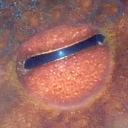Yahoo Answers is shutting down on May 4th, 2021 (Eastern Time) and beginning April 20th, 2021 (Eastern Time) the Yahoo Answers website will be in read-only mode. There will be no changes to other Yahoo properties or services, or your Yahoo account. You can find more information about the Yahoo Answers shutdown and how to download your data on this help page.
Trending News
Can you use silicon sealant for car quarter window?
I mean the normal cheap silicon used for aquarium glasses and bathrooms.
Or do I have to buy special glue.
Thanks
8 Answers
- Anonymous2 years ago
You mean SILICONE, dumbass. Silicon is a hard crystalline substance that computer chips are made from.
FAIL
- FlagMichaelLv 72 years ago
If it is to seal a gap and not to hold anything, you can buy a low viscosity silicone that will flow into the gap. I have only used it once, to seal under a glass shower door, and can't remember where I bought it. Probably at a hardware store.
The normal stuff will just make a mess.
- How do you think about the answers? You can sign in to vote the answer.
- Jay PLv 72 years ago
You "can" use whatever you want.
But it's not the proper way of sealing automotive glass.
- thebax2006Lv 72 years ago
RTV works good and holds up for a couple of years before UV rays deteriorate it.
- RobsteriarkLv 72 years ago
Absolutely not.
The version sold for bathrooms and aquariums gives off acetic acid (vinegar) as it cures. Put that into contact with car paint and a steel bodyshell and it will soften the paint and corrode the steel to make it rusty. It won’t happen immediately as it’s a weak acid, but the silicone rubber and the window rubber will have trapped it in contact with those surfaces where it can remain active for a very long time.
The only silicone sealants which are safe to use are the more expensive versions which are specifically designed for automotive use so will not damage paint and steel.
The above assunes the window is set into a rubber surround. No silicone sealant is suitable for glass which is directly bonded to the car bodyshell. That requires a special bonding agent and ideally a UV light to set the bond, but direct bright sunlight will also do the job far more slowly. The car must not be used during the bonding process as it causes the bodyshell to flex and ruin the bond.






